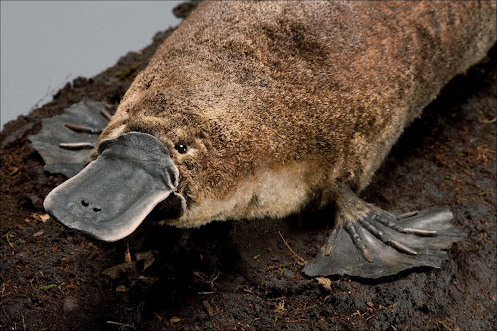As I pursue my Marine Biology degree I want to share things that I learn, because everyday something blows my mind or leaves my brain reeling. I think it is important to understand the delicate, intricate and exceedingly important ecosystems of Earth. We are in a vital stage right now teetering between irreversible destruction and those that fight hard for conservation. We are also living during a time of mass extinction and there is nothing more depressing than feeling that humans have contributed to these creatures being obliterated from existence on Earth. We share our oblate spheroid with millions of other things, all equally important in the grand line up of life. So in this space I will feature a creature as often as I am inspired or have the time to do so. Big, small, microscopic....living and extinct, aquatic and land-dwelling. Sometimes they might be something very familiar, and other times they might seem so very alien.
Enjoy! And help spread the love of learning (especially science) to everyone you know!
________________________________________________________________________________
Monotremes: Echidna and the Platypus
I will first start off by telling you why these creatures are so special. Apart from being insanely adorable they are in fact the only two mammals on Earth that lay eggs. If you are anything like me you didn't even know there were mammals that layed eggs, mammals are known specifically for being placental. Even Marsupials who have a pregnancy very unlike placental mammals (known as Eutherians). Monotreme means "one-hole" which refers to the fact that females have...one hole for everything.
(Photo: Roderick Mickens ©American Museum of Natural History)
Here we have the Platypus, the one and only survivor of its genus and family. IT IS VENOMOUS! The males have a spur on their hind foot that can draw a painful punch to humans, and deadly to even larger animals such as dogs. They are insect eaters though, so this is mostly used for protection.
Apart from venom another shocking fact is that they use electrolocation to find prey, this means that they detect electric fields generated by muscle contractions, another animal that commonly does this are dolphins. They were first described in 1798 and were thought to be a hoax where someone sewed a duck bill onto a beaver. What we think of as their giant nose/duck bill is actually a sensory organ.
They live in Eastern Australia and are no longer hunted and currently are not under any threat.
For the sake of the limited supply of Monotremes...let's keep it that way.
Above is pictured one of two types of Echidnas (ih-kid-na). This is a Short-Beaked Echidna, and the other not pictured (but you can use your imagination) is a Long-Beaked Echidna. There are two varying types of Long-Beaked and one of them is named after Sir David Attenborough.
They, like their other Monotreme friends and their reptilian ancestors before them, lay eggs. The eggs are laid in the female's pouch, incubated, and after they hatch the puggles (yes, baby Echidna's are called puggles) stay in there for about two months. The milk comes out of pores in the skin inside the pouch. I have seen varying degrees of the lifespan ranging from 10 to 16 to 50 years.
Since we are on the reproductive topic, I should probably mention that male Echidna's have extremely odd penis's. Of course you want to see a picture but don't say I didn't warn you.
(http://www.abc.net.au/science/scribblygum/June2000/f_echidpenis.htm)
I think this calls for a echid-u-not. I read that the males form lines behind the female and follow her around trying to mate with her.
The female has a two branched reproductive tract, and the four headed penis function only two at a time.
With a nose like theirs one can deduce that they eat ants and insects. They don't have teeth, in place of those handy utensils they have something handier for their diet. A sticky fast tongue and horny pads on the back of their tongue.
What are all those spikes for? Do they shoot them at predators? No. They don't do much except make them look more threatening than they actually tend to be, as they are very shy creatures that would rather curl up in a ball wedged between rocks than have a face off with anything trying to eat it.
They also have a spur like the platypus except it is useless seeing as it does not shoot venom. One helpful thing though to make up for some of those unfortunate adaptations is that much like the platypus they also use electrolocation to find ants and insects.
They live in only Australia and New Guinea.
There you have it! Go tell all your friends about how awesome Monotremes are! If you want more information go ahead and ask any question, I love doing research. Interesting side subjects include: how electrolocation work, how venomous spurs work and what they do to the victims, common ancestors and the animals evolution, fossil records of other types of Monotremes...and anything else you can think up!
Also, feel free to share anything cool you learn!
.jpg)